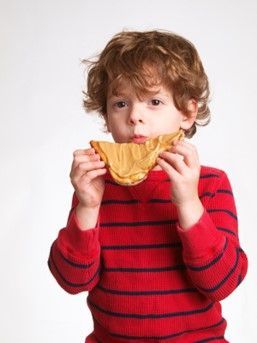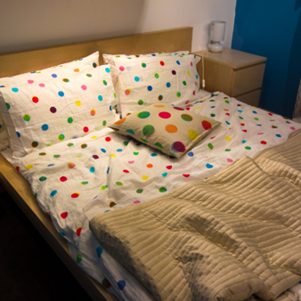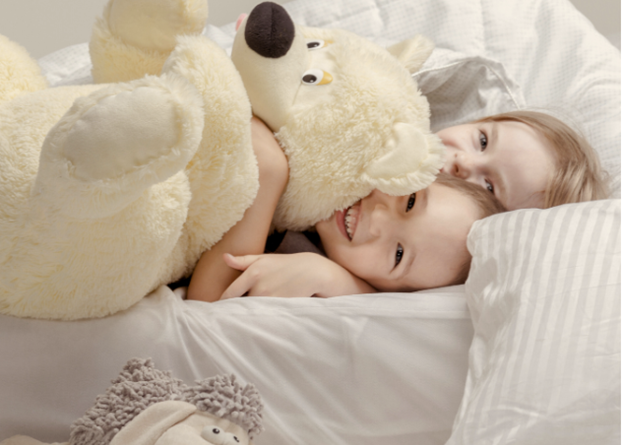Top 3 Factors Contributing to Feeding Issues in Children with Autism
Children of all backgrounds can have a feeding disorder, but there is a higher rate of feeding issues in children with developmental disabilities (40-80%). Groups of children who are more likely to be diagnosed with a feeding disorder include premature infants, children with Failure to Thrive, children with autism, and children with various genetic syndromes.
While the exact causes of feeding concerns are not fully understood, there are several factors that may contribute to these challenges. We offer three distinct profiles of feeding challenges for parents and caregivers to consider.

#1: Food Selectivity
Many children with autism have enhanced sensory systems, which can affect their interaction of taste, texture, smell, and the appearance of food. Certain tastes, textures, or smells may be preferred, which may make them more likely to reject certain foods. For example, these children may be averse to certain textures, such as mushy or crunchy foods, or they may find strong flavors overwhelming. We offer the classification of this category as food selectivity.
Children with food selectivity behaviors may eat regularly, are likely gaining weight, and may show no immediate signs of a lack of growth or development. Despite this, there may be emerging or consistent behavioral components related to eating. In our experience, some common behaviors may include:
- turning their heads away when a spoon is presented,
- closing their mouth or pushing away non-preferred foods,
- restricting the amounts and/or variety of food(s),
- eating only a handful of preferred foods (which may or may not have varying textures, flavors and tastes).
Traditionally speaking, one category of food may be accepted (e.g., chips, specific colors of foods, crunchy textures), but other textures might be rejected. Furthermore, if the child is engaging in behaviors that impact the social environment or conflict with family values, these behaviors should be examined. In general, if behaviors emerge that limit, impact or make the eating experience more difficult or aversive to the family, these may be red flags and a cause for concern, despite the child’s normal growth and development.
Some frequently observed examples of ways in which food selectivity may impact family mealtimes and family values include the requirement for the parent to make two meals (one meal for the family and another different meal for the child). This is a common challenge and it can be very frustrating for families to navigate; for example, the child will only eat chicken nuggets and french fries when the rest of the family is eating grilled chicken with veggies. Moreover, expanding the food options and choices for the family may prove to be extremely difficult when the child is reluctant to try new foods, or when the family focuses on healthy food choices and the child prefers chips, candy and soda. When siblings are involved, there may be questions about why one child is permitted access to unhealthy food while they are restricted to eating healthy foods. Siblings may not understand the challenges that children with ASD face. Explaining why one child is eating differently may be an opportunity to teach acceptance and toleration of their sibling’s exceptionalities.
#2: Rigidity and Routine

Children with autism often thrive on routine. Changes in their environment or daily routines can be challenging for them; feeding issues often arise as a result. Therefore, children may prefer to eat the same foods repeatedly, and they may resist trying new foods due to the uncertainty and unpredictability associated with unfamiliar foods. We classify this category as food rigidity.
Examples of rigid eating behaviors include:
- only eating a certain brand of food,
- eating a certain number of pieces of food,
- using a specific plate,
- only eating at home while sitting on the couch,
- using a specific cup or eating utensil,
- sitting only in one place at the table,
- eating only while watching their preferred video on YouTube while sitting on their father’s lap.
These children develop ‘rules’ for when, how and what type of food is ingested and under what conditions eating occurs. Rigidity may also include engaging in rigid eating patterns based on the location or the environment. If the child doesn’t have rigid eating behaviors with the acceptance of food, but they will only eat in certain locations, this warrants an assessment. If rigid behaviors extend to social contexts, this causes stress for the family, despite the fact that the child may be eating a variety of foods. (For example, it may be difficult for the family to go to a restaurant.) Remember, any rigid pattern of behavior around food acceptance is a cause for concern.
Rigid eating is also defined as “avoidant/restrictive food intake disorder (ARFID)” according to the 2013 version of the Diagnostic and Statistical Manual of Mental Disorders, 5th Edition (DSM-5). To meet the diagnostic criteria, individuals must demonstrate weight loss, a nutritional deficiency, require supplementary nutrition dependency, and there must be disruption to the individual’s psychosocial functioning. It’s important to note that the DSM-5 diagnostic criteria is not meant to be exhaustive, as “avoidant” and “restrictive” are defined loosely. As such, selective, rigid and refusal eating patterns are lumped into one category encompassing all profiles. This addition to the DSM-5 attempted to identify the medical definition related to feeding disorders and is meant to be used as a tool for diagnostic purposes. If left untreated, minor feeding concerns may evolve into more severe forms, so early evaluation is critical. If your child demonstrates any behaviors across all profiles, this is cause for an evaluation with a specialist.
#3: Food Refusal

It is important to note that rigid eating patterns may also lead to food refusal behaviors. LIkewise, food selectivity can also lead to food refusal. Food selectivity, rigidity and refusal are three related but distinct concepts when it comes to children's eating behaviors. Food refusal refers to a child's outright rejection or refusal to eat specific foods, certain types of foods or all foods. Food refusal involves a consistent and persistent avoidance or resistance towards consuming particular foods, regardless of the reason behind the refusal. Food refusal can manifest as a strong negative reaction, such as crying, gagging, vomiting, engaging in aggressive behaviors, spitting out the food, or pushing or throwing food away. More severe forms of food refusal include the failure to ingest any food or liquids, and this requires immediate medical treatment that may involve surgical interventions to remediate.
Conclusion
While many neurotypical children may have issues related to feeding, the instances of feeding issues are significantly higher in children with autism and other developmental disabilities. Due to a number of factors that affect this population of children, it is very helpful to identify if the feeding issues are related to food selectivity, food rigidity, or food refusal, as the treatment options can vary depending on which of these situations is applicable.
Final note: Even if your child is getting proper nutrition, you may still be concerned if you are struggling when it is time to feed him/her. If your child exhibits some of the behaviors described in this article, please document your observations and reach out to your pediatrician and/or other experts for further guidance.


LOCATIONS
Asheboro Office
616 Albemarle Rd.
Asheboro, NC 27203
Thomasville Office
234 Cedar Lodge Rd.
Thomasville, NC 27360
HOURS
Monday - Friday
8:00am - 5:00pm
Saturday and Sunday
Closed











